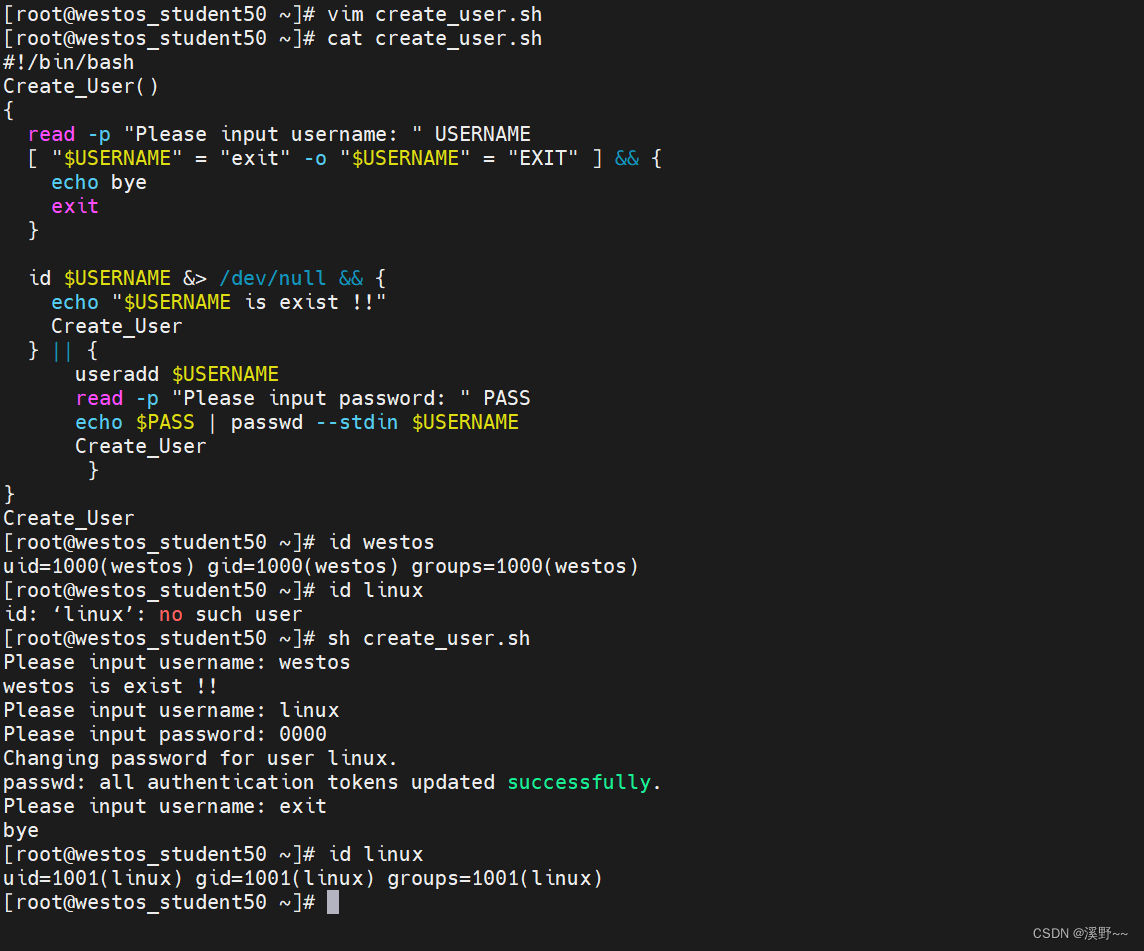shell脚本中的变量
1.变量的定义
定义本身:变量就是内存一片区域的地址
变量存在的意义:命令无法操作一直变化的目标,用一串固定的字符来表示不固定的目标可以解决此问题
2.shell脚本中变量的定义方法
环境级别
export a=1
在环境关闭后变量失效
用户级别
vim ~/.bash_profile
export a=1
source ~/.bash_profile ##重新读取文件,不然无法识别
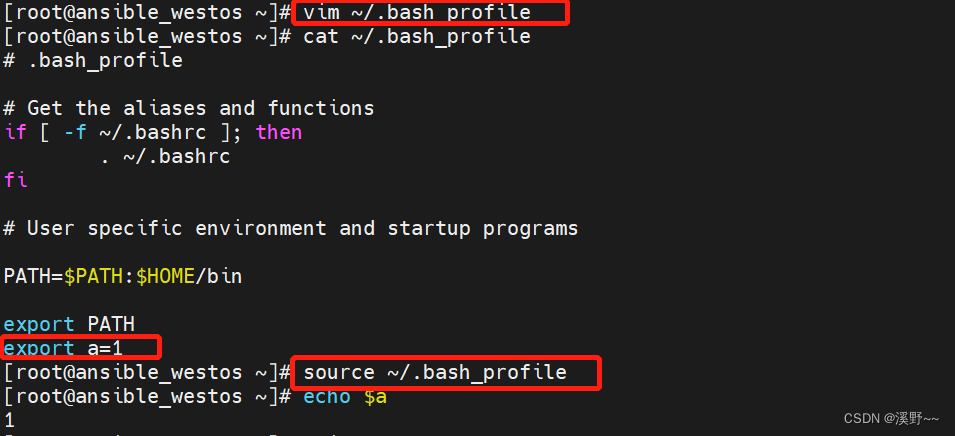
系统级别
vim /etc/profile ##系统级别的传参
export a=2

vim /etc/profile.d/westos.sh ##自定义子配置文件
export b=3

变量名称 :可包含的字符 ,字母 ,下划线_ ,数字
变量名称定义规则 :不能用数字开头
建议: 变量名称短全用大写字符 ,变量名称长用_区分子类 ,如:WESTOS ,Westos_Linux ,westoS_Linux
env --查看所有系统变量
unset --删除变量
3.变量的转译
#1)转译
#转译单个字符
"" #弱引用,批量转译个数字符 不能转译" " "" "$" "!"
'' #强引用


#2)声明
a=1
echo $ab
echo ${a}b

#3)变量的数组
a=(1 2 3 4 5)
a$[a[@]:起始元素id:元素个数]
echo ${a[0]} ##数组中第一个元素
echo ${a[1]} ##数组中第二个元素
echo ${a[*]} ##数组中所有元素
echo ${a[@]} ##数组中所有元素
echo ${a[@]:0:3} ##数组中第一至第三个元素
echo ${#a[@]} ##数组中元素的个数
unset a[n] ##删除数组中的第n1个元素
unset a ##删除a这个数组

4.Linux中命令的别名设定
alias xie='vim' ##临时设定
vim ~/.bashrc ##只针对用户级生效
alias xie='vim'
vim /etc/bashrc ##针对系统所有用户生效
alias xie='vim'
unalias xie ##删除当前环境中的alias
source~/.bashrc ##重新读取文件,不然无法识别
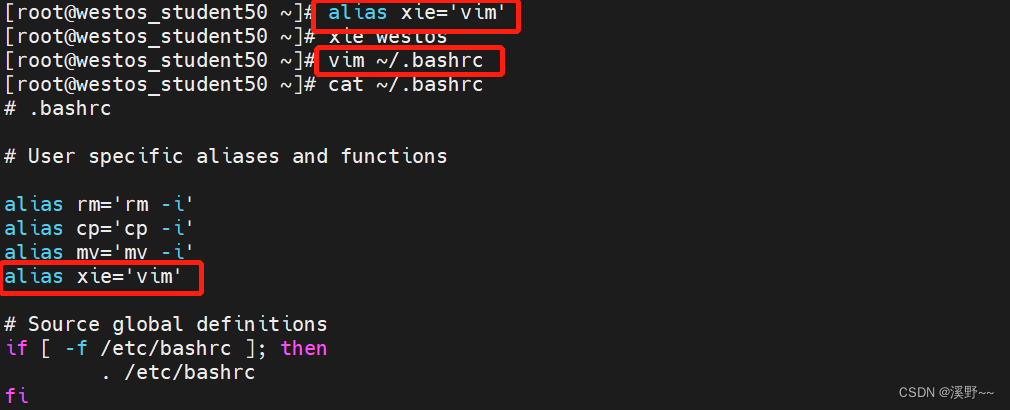
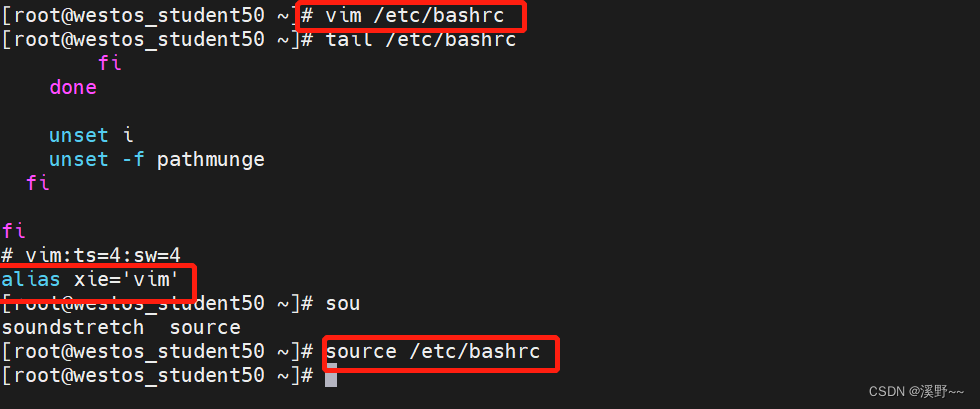

5.用户环境变量的更改
设定方式:
~/.bash_profile
export PATH=$PATH:/mnt
/etc/bash_profile
export PATH=$PATH:/mnt
#1)直接利用命令执行结果
$()| ##优先执行

#2)脚本中的传参
非交互模式:
$0 is /mnt/test.sh <!脚本本身>
$1 is westos <!脚本后所输入的第一串字符>
$2 is linux
$3 is redhat
$* is westos linux redhat <!脚本后所输入的所有字符"westos linux redhat">
$@ is westos linux redhat <!脚本后所输入的所有字符'westos' 'linux' 'redhat'>
$# is 3 <!脚本后所输入的字符串个数>
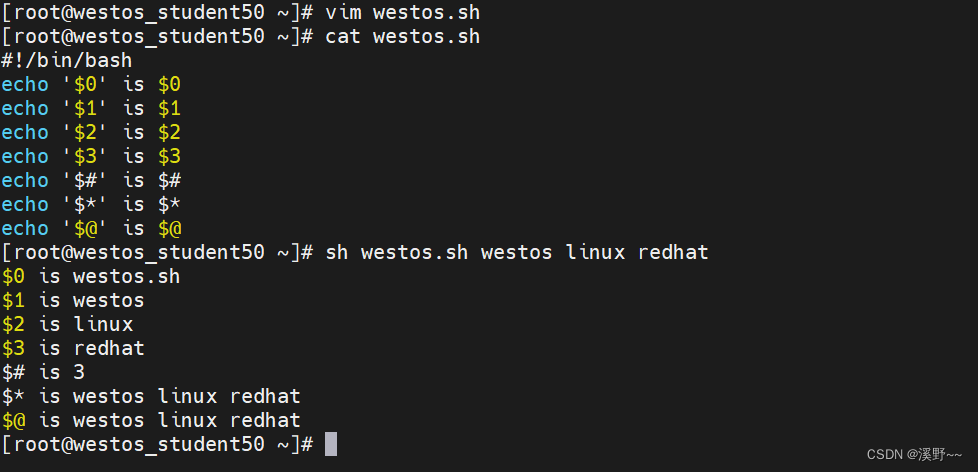
交互模式传参:
read -p "please input word:" ##输出提示语
-s ##隐藏输入内容
-p ##显示提示语

#7.脚本函数
定义:
程序的别名
设定方式:
WORD()
{
action1
action2
}
WORD 在脚本中就代表action1 action2这两个动作

# 练习脚本 #
sh create_user.sh
Please input username: westos
westos exist<output>> westos is exist>Please input username:
westos not existplease input password: 无回显密码
此用户会自动建立并且密码为提示后设定的密码
并显示:westos is created
并再次提示Please input username:
当Please input username:exit
此脚本退出
vim create_user.sh
#!/bin/bash
Create_User()
{
read -p "Please input username: " USERNAME
[ "$USERNAME" = "exit" -o "$USERNAME" = "EXIT" ] && {
echo bye
exit
}
id $USERNAME &> /dev/null && {
echo "$USERNAME is exist !!"
Create_User
} || {
useradd $USERNAME
read -p "Please input password: " PASS
echo $PASS | passwd --stdin $USERNAME
Create_User
}
}
Create_User
